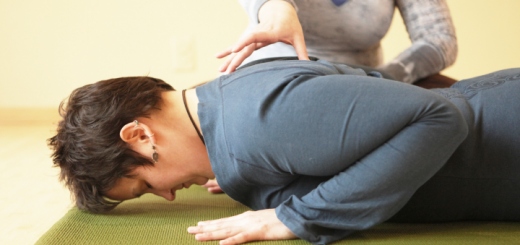What you need to know about your new student and how to get it
3Every time a new student comes to yoga, the teacher needs to develop some understanding about who this person is and what they need. It is particularly important if the student is interested in one-on-one work. As yoga teachers and therapists, we have several distinctive ways to collect the information we need to know about the student, some more direct (via conversation) and some less direct (via observation). I like to think of those bits of information we gather as pieces of glass in a kaleidoscope. Each one of those pieces has its value, but they only reveal their true significance when placed in the context of other pieces. Just as a kaleidoscope shows a beautiful, multidimensional image when the pieces of glass fall into place, the bits of information we collect about our students come together to form a more complete picture of the student.

We can use a variety of ways to get the necessary information when we begin to work with a new student. All of those channels are necessary when you work with students one-on-one and you can choose the ones that are appropriate when you teach in groups.
1. Initial contact
When the student first expresses interest in trying yoga (in person, in a phone call or in an email), they usually give us a basic idea of what prompted them to do it. Some examples include statements like “’I feel so stiff in the morning”, “My neck hurts all the time” “I am so stressed with this COVID stuff, “I feel weak, I want to get stronger”, etc.) Most of the time those reasons describe student’s surface needs, the ones that are easy for them to identify and communicate. This is important information that we need to record, preferably in the student’s own words.
2. Intake form
Many yoga teachers send their new students an intake form to fill out prior to the first class or session. This form can contain different kinds of questions, including essential information we need to know for safety purposes, like diagnosed conditions, recent surgeries, current medications and treatments, and so on. It can also contain other kinds of questions that give the teacher a better understanding of the challenges that the student is dealing with within context of their life. It is useful to organize the intake form following the structure of the Panchamaya (Kosha-s) Model and ask questions that relate to different layers of the student’s system. That way we get a better understanding of the student’s physical state, physiological balance, mental stability, and overall psychological and spiritual well-being.
Following the template of the Panchamaya Model has an additional benefit: it demonstrates to the student that different dimensions of our system are intricately linked, and that yoga can be used to harmonize all of them. Students usually come to yoga with all sorts of preconceived notions about what it is (the most common being that yoga is mostly about stretching). Asking questions about their sleep, energy levels, food choices, activity levels, emotional balance and community connections can open their minds about the interconnectedness of those factors and the role yoga can play in managing them.
3. First session
By the time the student arrives at their first session, we already have a basic idea of what they are dealing with. First session (either in person or online) gives us an opportunity to dive deeper. During the first session we usually pay attention to several layers of the student’s self-expression:
- Verbal expression is the information that the student voices out. After initial small talk to make them feel comfortable, we usually ask them again about what brought them to yoga, so that we could hear it directly from the student AND observe their non-verbal cues as they talk about it. Then we ask follow-up questions while continuously observing other layers of their self-expression.
- Physical expression gives us information on how the student inhabits the body. We notice their body awareness, guarded or restricted areas, sense of presence and general level of comfort within the body.
- Physiological expression gives us a peak into the state of their physiology with the most telling cues coming from their breathing pattern, quality of energy they exibit and their complexion.
- Emotional expression can help us understand the student’s attitude toward their challenges. It can come through with statements like “I hate when this happens”, “It really slows me down”, ”It prevents me from doing …”, “I feel so discouraged”, and so on.
- Mental expression shows whether or not the student is able to stay focused, follow instructions, finish their train of thought, remember what was said before and stay present with their experience.
- Spiritual expression reflects the degree of self-awareness and the level of entanglement between the student and their condition, whether or not they are able to step out of their challenge and view it with compassion, curiosity and understanding. If the student has begun to define themselves through their condition, it will take some time and mental reframing to shift that perception.
We observe those elements of the student’s self-expression during our conversation, before we even begin to move. All those expressions are linked and affect one another. They give us bits of information that continue to form and refine our understanding of the student, just like the image is revealed in the kaleidoscope. And if you turn the kaleidoscope slightly, you will get an entirely different picture. Similarly, a new piece of information or a slight shift in perspective can completely shift the entire picture we have of our student. That is why we cannot become too fixated in our perception of our students. We need to stay open and receptive to whichever way things evolve.
When the student begins to move, we get even more information about their physical limitations, weak spots, range of motion, understanding of the poses, breathing patterns, general body awareness, attitudes, and so on. Next time let’s spend some time discussing structural and movement observation of our students – tune in!
[jetpack_subscription_form]




















Great article thanks and timely
Thank you!!!
Thank you for writing this article Olga!